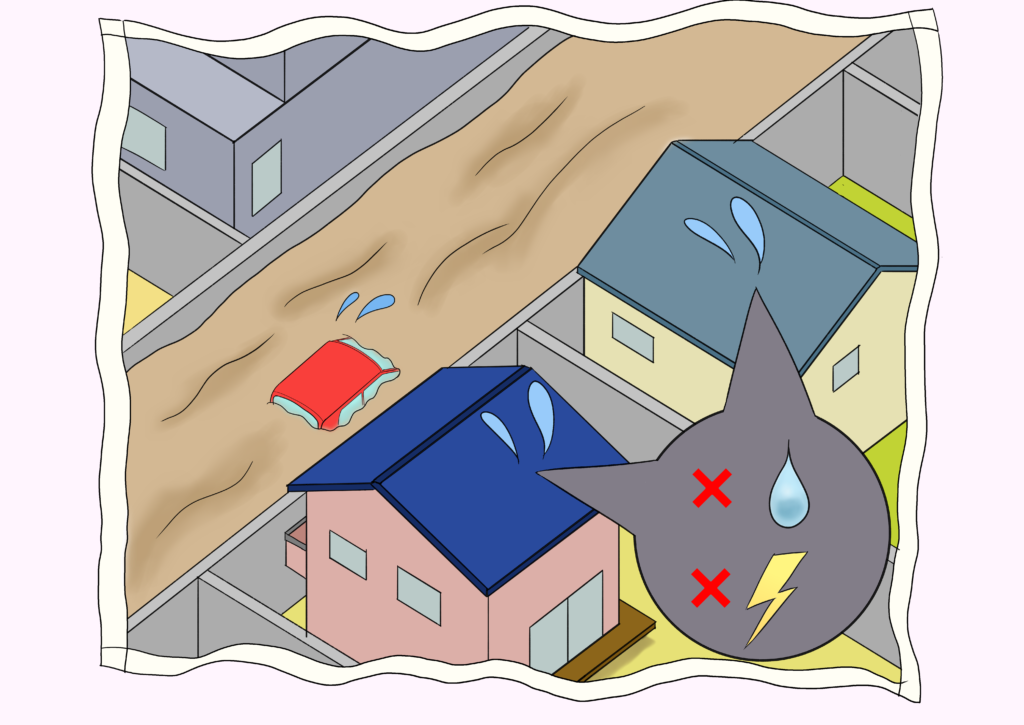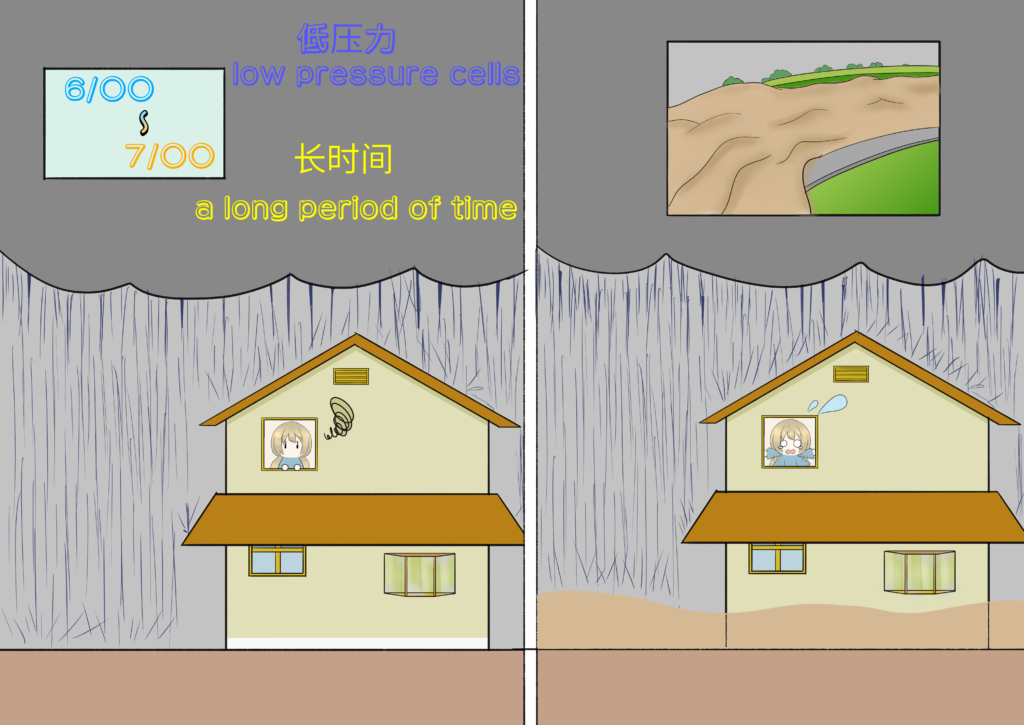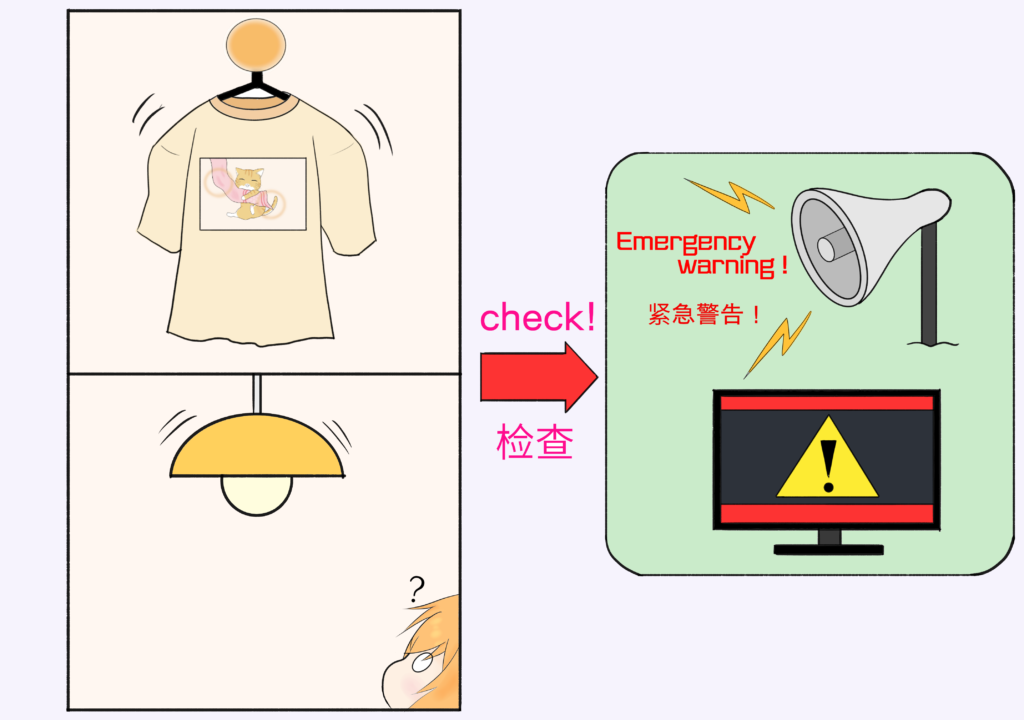
Continuous heavy rainfall for several days over the same catchment location. Hourly rainfall exceeds all-time records.
River water levels rise to overflow the embankment and water then enters roads and houses.
In severe cases, roads become rivers and vehicles float and are washed away with the water.
Residential areas lose power and drinking water, traffic is paralyzed and the ground saturated.

